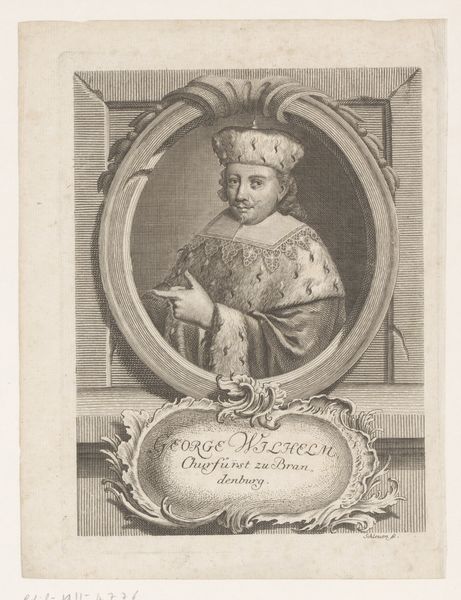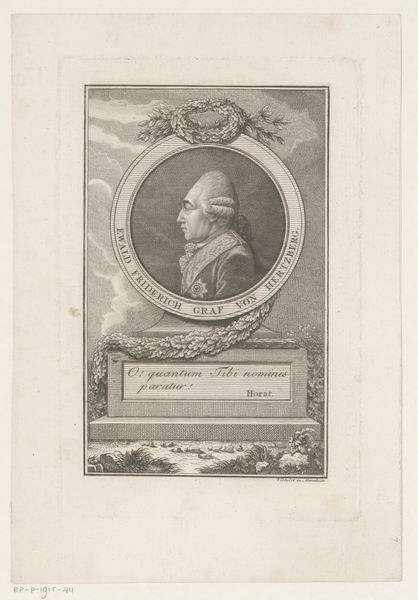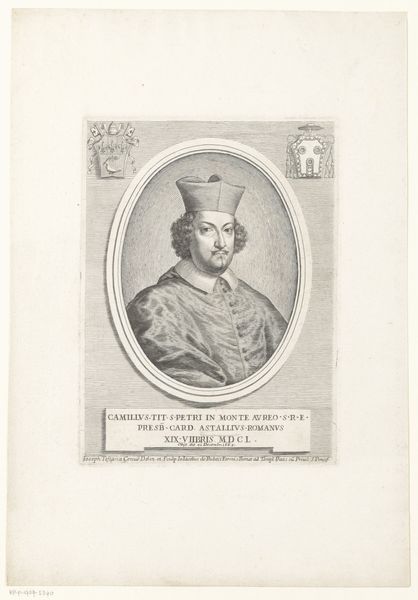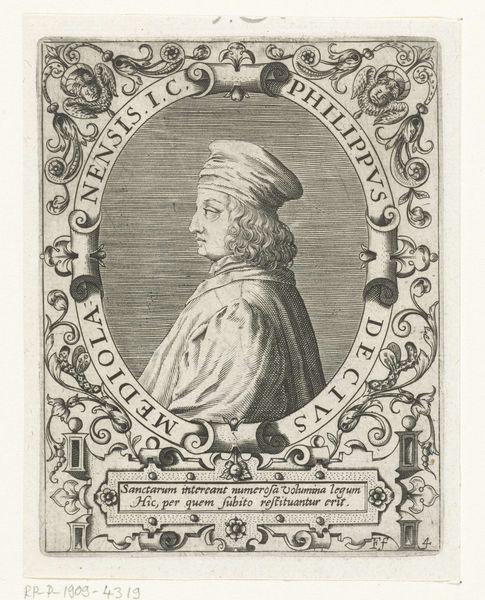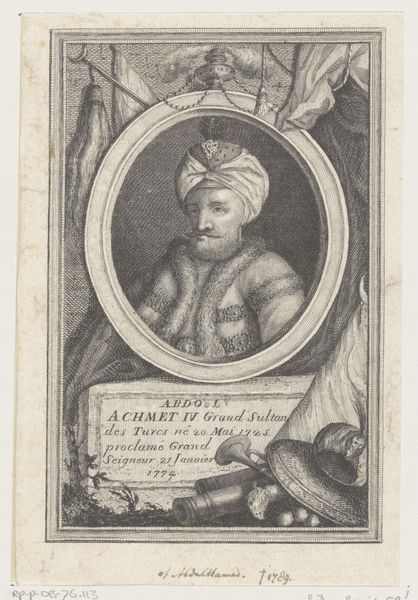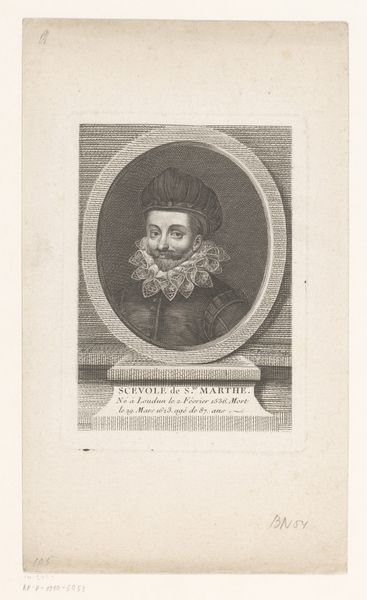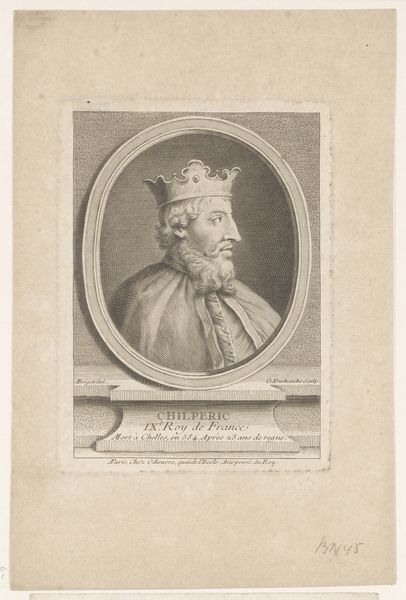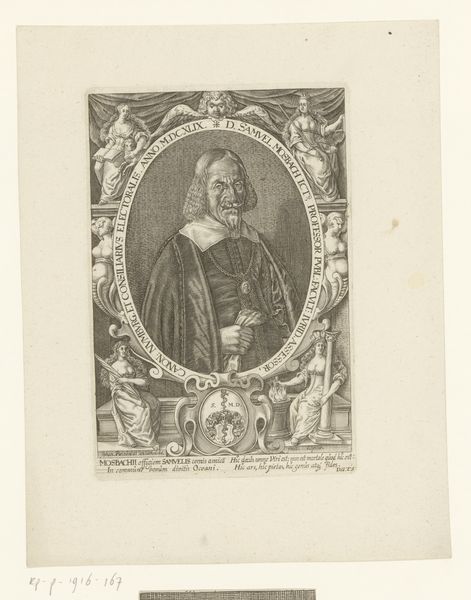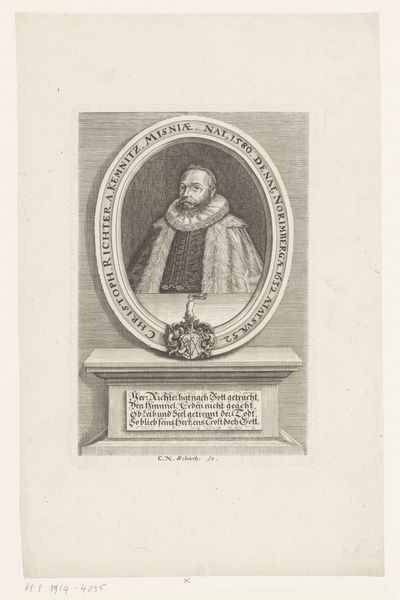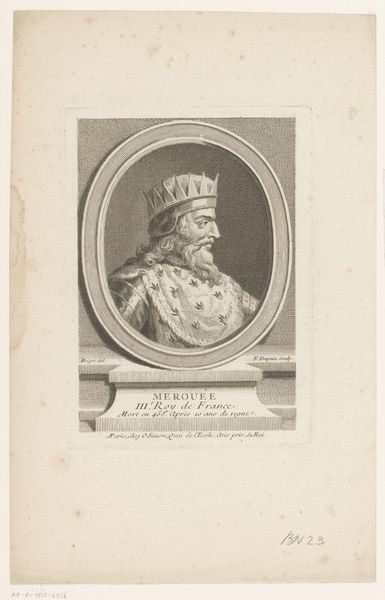
Portret van Joachim II Hector, keurvorst van Brandenburg 1721 - 1771
0:00
0:00
engraving
#
baroque
#
line
#
history-painting
#
engraving
Dimensions: height 225 mm, width 165 mm
Copyright: Rijks Museum: Open Domain
Curator: This print at the Rijksmuseum captures Joachim II Hector, Elector of Brandenburg, a commanding figure rendered through engraving, likely created sometime between 1721 and 1771 by Johann David Schleuen. Editor: It’s stately, certainly. I'm struck by the elaborate fur trim, the way it almost overwhelms his face, giving him an air of both power and vulnerability. There's a solemnity about the portrait that speaks volumes about the sitter’s status and the era’s approach to portraying power. Curator: Precisely. The fur isn't merely decoration. It's an iconographic signifier, laden with symbolic weight. Think of the ermine – it denotes purity and integrity, qualities deemed essential for a ruler. It connects Joachim to a visual language of sovereignty that had been developing for centuries. Editor: And the way he holds that scepter, so understated. He isn't brandishing it aggressively; it's almost an extension of his hand. What about the institutional implications? Was this commissioned to reinforce his authority, to create a visual propaganda? Curator: The engraving itself, as a medium, allowed for wide dissemination of this image. Prints like these played a vital role in shaping public perception. The level of detail also echoes baroque sensibilities. Editor: The frame around him adds another layer. It’s an architectural feature, implying permanence and strength. Almost as if he is part of a building’s architecture and, therefore, ingrained in its culture. Did the Schleuen produce it based on an existing portrait? What was the role of printmakers at that time? Curator: The creation process often involved translation – Schleuen probably reproduced this from a painted portrait to wider distribution of Joachim’s likeness. And to that end, artists in the Baroque period frequently re-interpreted well known symbols to reassert traditional virtues and expectations of powerful nobility. Editor: Considering the print's date range, its creation may also speak to the shifting perception of historical figures and the ways their legacies were being reimagined in subsequent eras. Curator: Exactly. Even today, we read layers of meaning into images, projecting our current values onto them. This single image is an index of evolving ideals of power, memory and the ongoing work of image making in political culture. Editor: A powerful reminder that visual communication, then and now, shapes our understanding of leadership and legacy. Thanks for shedding light on that.
Comments
No comments
Be the first to comment and join the conversation on the ultimate creative platform.

